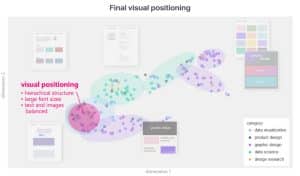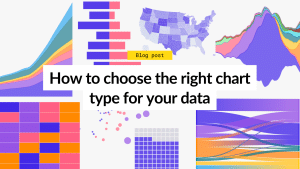In the current digital environment, images are absolutely necessary for effectively expressing the message of your business and attracting the attention of your target audience. The selection of appropriate images for your website can have a considerable impact on the level of user engagement, the perception of your brand, and the overall success of your website. In this tutorial, we will take you step-by-step through the process of selecting pictures that not only meet your aesthetic needs but also provide a strategic function. How to Choose the Right Visuals for Your Website

Understanding the Role of Visuals in Web Design
The Importance of Visuals for User Engagement
When people visit your website, the first thing that they notice is typically the visuals that you have there. You can make your website more appealing and interesting by using high-quality photographs, videos, and graphics. This will encourage viewers to stay on your site for longer and explore the stuff you have to offer. Bounce rates can be decreased and the amount of time visitors spend on your website can be increased if your website is professionally designed and has visually appealing content.
Visuals as a Reflection of Your Brand
It is important that the graphics you select are congruent with the identity and values of your company. The personality of your business should be reflected in your images in a consistent manner, regardless of whether you are going for a professional, playful, or minimalist design. Making use of colors, styles, and themes in a consistent manner helps to build a unified brand image that connects with the audience you are trying to reach.
Key Factors to Consider When Choosing Visuals
Know Your Audience
While choosing images, it is crucial to have a solid understanding of your intended audience. Take into account their preferences, demographics, and areas of interest. An audience that is interested in technology, for instance, would like sleek and contemporary pictures, whereas an audience that is focused on families might choose images that are warm and friendly. The connection that your audience has with your brand can be strengthened by tailoring your graphics to the expectations that they have.
Match Visuals to Your Content
All of the material on your website ought to be complemented and improved by the visuals you use. The images, videos, and graphics that you use should not distract from the idea that you are attempting to express but rather lend support to it. For instance, if you are discussing a complicated idea, using infographics or diagrams can make the content easier to understand and comprehend completely. Images that depict lifestyles, on the other hand, have the ability to elicit feelings and make your content more relatable overall.
Quality Over Quantity
If you want to avoid overwhelming your website with a large number of substandard pictures, it is preferable to utilize a few high-quality visuals. Images that are of poor quality can give the impression that your website is not professional, which may cause visitors to leave. One should make an investment in high-resolution photographs and movies that appear crisp on all devices, including mobile phones and desktop computers.
Consider the Emotional Impact
Visuals have the ability to elicit feelings, which can have an effect on how users view your brand. If you want to elicit certain feelings from your audience, you should select images and colors that correspond with those feelings. As an illustration, colors that are gentle and warm might evoke feelings of comfort, whilst colors that are bright and vibrant can convey feelings of energy and excitement. Having an understanding of color psychology can assist you in making more educated selections regarding the visual choices you make.
Types of Visuals to Consider for Your Website
Photographs
Among the various forms of visuals that are utilized on websites, photographs are among the most prevalent. They have the ability to make your brand more real and establish a connection with your target audience. It is important to take into consideration the use of genuine and unique photographs when selecting photographs to represent your products, services, or team members. Stock photographs can be helpful; however, you should make sure that they are consistent with your brand and do not appear to be contrived or generic.

Illustrations
Illustrations have the potential to lend your website a distinctive and imaginative quality. They offer a high degree of customization and may be adapted to perfectly resemble the aesthetic of your company. When it comes to conveying esoteric topics, adding a humorous element to your website, or establishing a memorable brand mascot, illustrations are very successful.
Infographics
The use of infographics is an excellent method for presenting complicated information in a format that is both visually appealing and simple to comprehend. They use a combination of text and pictures to effectively communicate information, procedures, or ideas in a short amount of time. Infographics are particularly helpful for blog posts, reports, and landing pages, all of which serve the purpose of conveying important information in a condensed manner.
Videos
Videos are extremely effective tools that can be used to captivate your audience and communicate information in a manner that is dynamic. This kind of content has the potential to greatly enhance user engagement and retention, regardless of whether it is a product demonstration, a testimonial, or an explanatory video example. It is important to make sure that your videos are well-produced, succinct, and consistent with the tone of your brand.
Icons and Symbols
The user experience can be improved by using icons and symbols because they make navigation easier to understand. They are especially helpful for buttons, menus, and calls to action in their own domains. Whenever you are selecting icons, make sure that they are easily recognizable and comprehensible, and choose styles that are consistent with the overall design of your project.
Best Practices for Integrating Visuals into Your Website
Optimize Visuals for Web Performance
Despite the fact that high-quality images are essential, they should not be allowed to affect the performance of your website. The loading time of your website can be slowed down by large image and video assets, which can result in a negative experience for the user. Your visuals should be optimized by compressing files, using appropriate formats (such as JPEG for photos and PNG for images with transparency), and employing approaches that are responsive to design in order to guarantee that they appear well on all devices.

Maintain Consistency Across Your Site
When it comes to developing a unified user experience, maintaining visual consistency is essential. All of the photos, films, and graphics should adhere to a color palette, style, and tone that is consistent with one another. This uniformity helps to establish the identity of your business and gives the impression that your website is more professional because of it.
Use Visuals to Guide User Interaction
When it comes to directing customers through your website, visuals may do a substantial amount of work. It is crucial to make strategic use of graphics and icons in order to draw attention to key locations, such as buttons that call for action or information that is significant. Make certain that your images are supportive of the user journey and that navigation is easy to understand.
Ensure Accessibility of Visual Content
To ensure that your visual material is accessible to all users, including those with impairments, it is essential to follow this practice. Additionally, ensure that there is sufficient contrast between the colors of the text and the background, and give captions or transcripts for videos. Images should have informative alt text added to them. This method not only improves accessibility but also boosts the search engine optimization of your website.
Conclusion
One of the most important aspects of web design is selecting the appropriate visuals for your website. This decision can have a big impact on user engagement, perception of your brand, and overall success or failure. You can design a visually attractive website that effectively communicates the message of your business and enriches the user experience by first gaining an insight of your audience, then matching images to your content, and then adhering to best practices for integration. When selecting graphics that will resonate with your audience and boost the design of your website, it is important to keep in mind that quality, consistency, and relevancy are the most important factors. How to Choose the Right Visuals for Your Website





